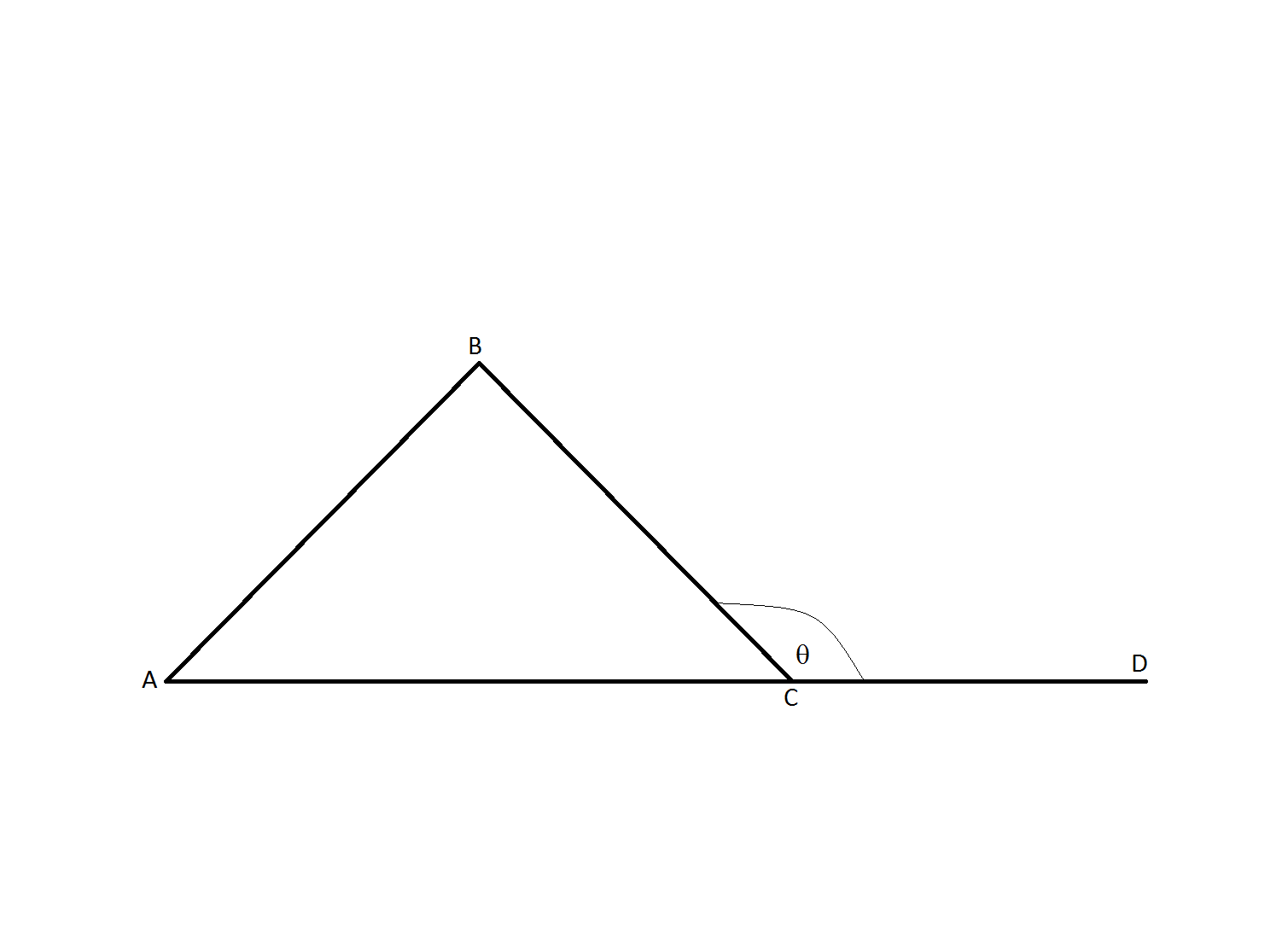All High School Math Resources
Example Questions
Example Question #302 : Plane Geometry
Solve for 

The angles of a triangle must add to 180o. In the triangle to the right, we know one angle and can find another using supplementary angles.
Now we only need to solve for 
Example Question #2 : How To Find An Angle In An Acute / Obtuse Triangle
 If
If 


Not enough information to solve
All of the interior angles of a triangle add up to 
If 

Therefore,
Now, 



Also, by definition, the angle of an exterior angle of a triangle is equal to the measure of the two interior angles opposite of it 
Example Question #1 : Acute / Obtuse Triangles
Two interior angles in an obtuse triangle measure 

Interior angles of a triangle always add up to 180 degrees.
Example Question #413 : Problem Solving
In a given triangle, the angles are in a ratio of 1:3:5. What size is the middle angle?
Since the sum of the angles of a triangle is 

If the smallest angle is 20 degrees, then given that the middle angle is in ratio of 1:3, the middle angle would be 3 times as large, or 60 degrees.
Example Question #1 : Triangles
Triangle ABC has angle measures as follows:

What is 
57
90
79
44
19
57
The sum of the measures of the angles of a triangle is 180.
Thus we set up the equation
After combining like terms and cancelling, we have
Thus
Example Question #3 : Isosceles Triangles
The base angle of an isosceles triangle is five more than twice the vertex angle. What is the base angle?
Every triangle has 180 degrees. An isosceles triangle has one vertex angle and two congruent base angles.
Let 

So the equation to solve becomes
Thus the vertex angle is 34 and the base angles are 73.
Example Question #2 : Isosceles Triangles
The base angle of an isosceles triangle is 15 less than three times the vertex angle. What is the vertex angle?
Every triangle contains 180 degrees. An isosceles triangle has one vertex angle and two congruent base angles.
Let 

So the equation to solve becomes 
Example Question #311 : Geometry
The base angle of an isosceles triangle is ten less than twice the vertex angle. What is the vertex angle?
Every triangle has 180 degrees. An isosceles triangle has one vertex angle and two congruent base angles.
Let 

So the equation to solve becomes
So the vertex angle is 40 and the base angles is 70
Example Question #4 : Isosceles Triangles
The base angle of an isosceles triangle is 10 more than twice the vertex angle. What is the vertex angle?
Every triangle has 180 degrees. An isosceles triangle has one vertex angle and two congruent base angles.
Let 

So the equation to solve becomes
The vertex angle is 32 degrees and the base angle is 74 degrees
Example Question #2 : Triangles
In an isosceles triangle, the vertex angle is 15 less than the base angle. What is the base angle?
Every triangle has 180 degrees. An isosceles triangle has one vertex angle and two congruent base angles.
Let 

So the equation to solve becomes
Thus, 65 is the base angle and 50 is the vertex angle.
All High School Math Resources



































































